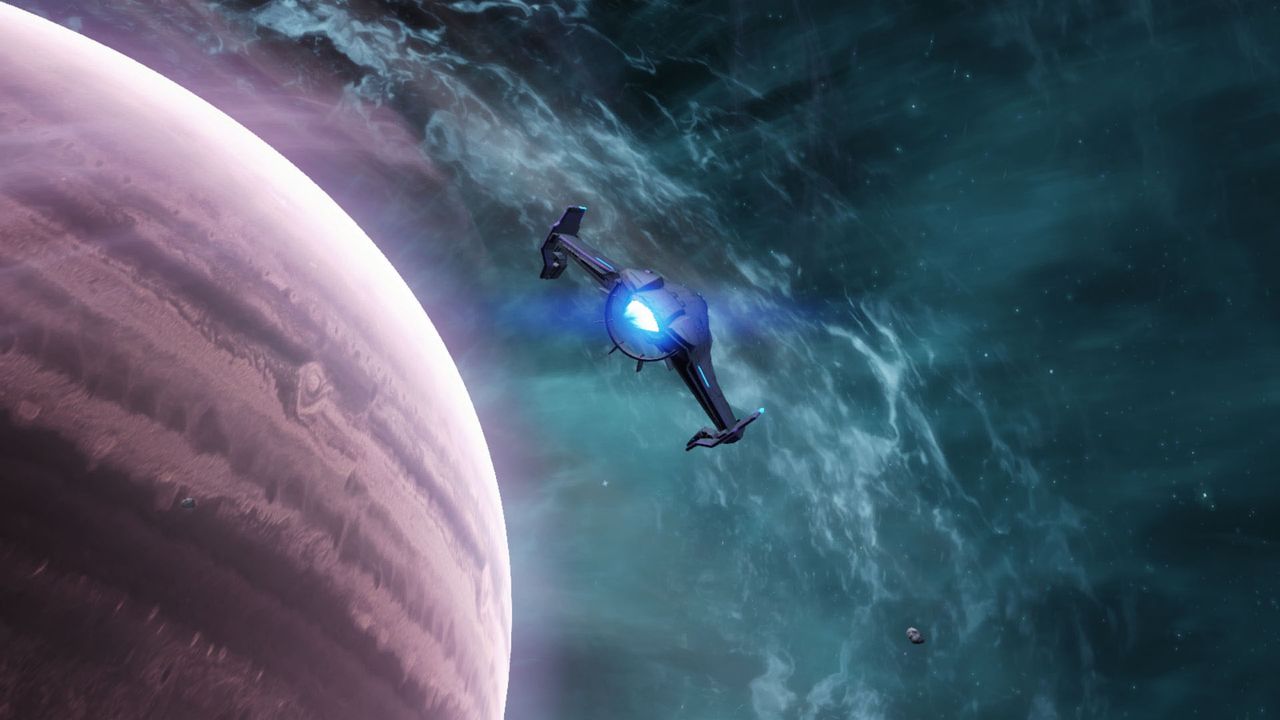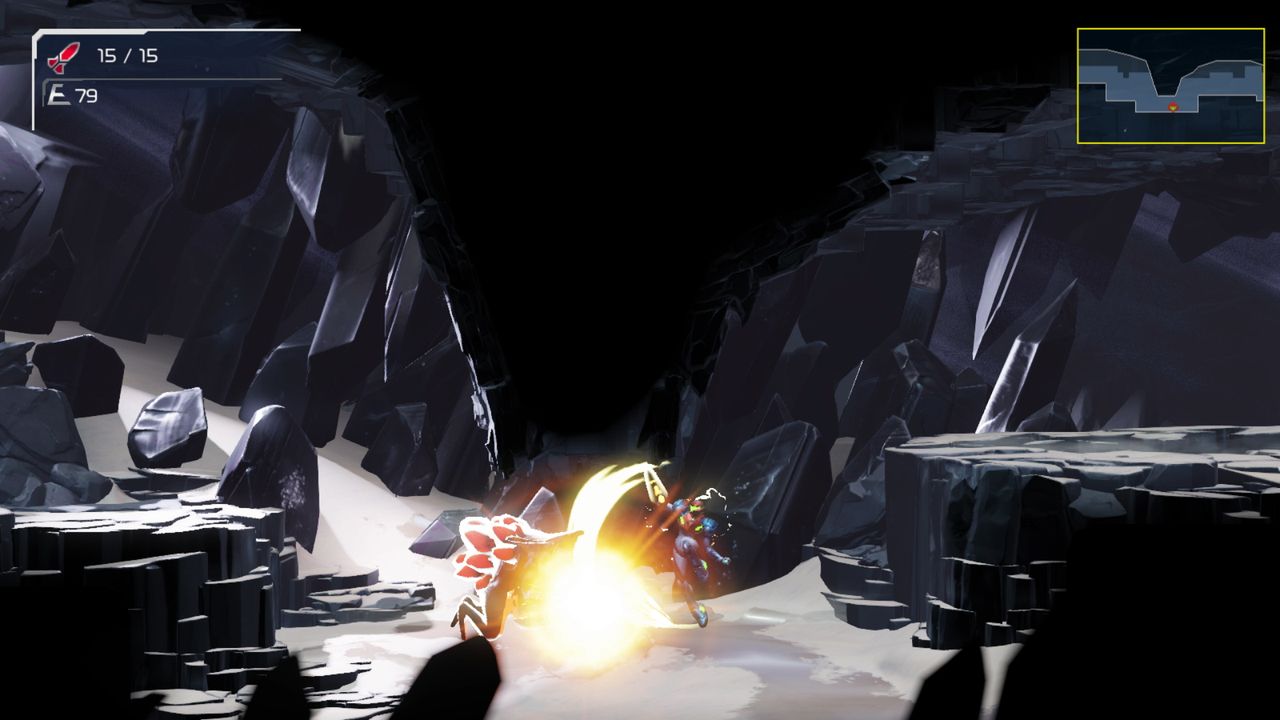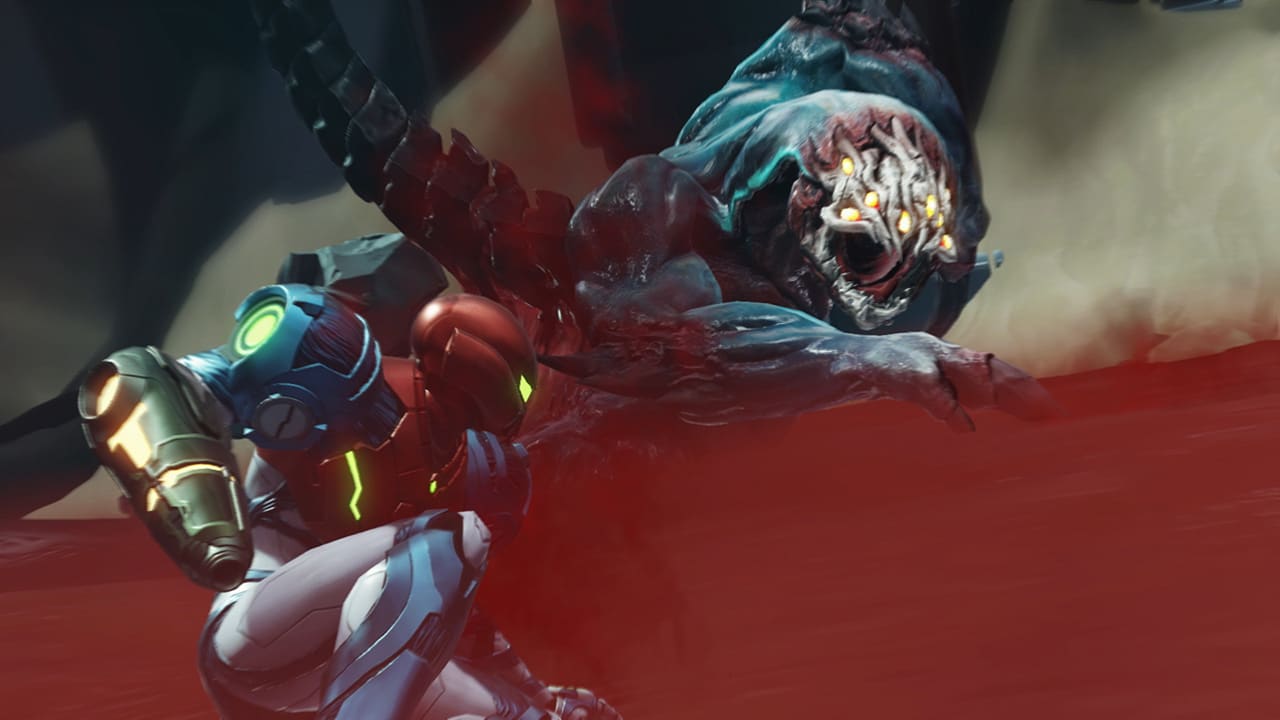Metroid Dread
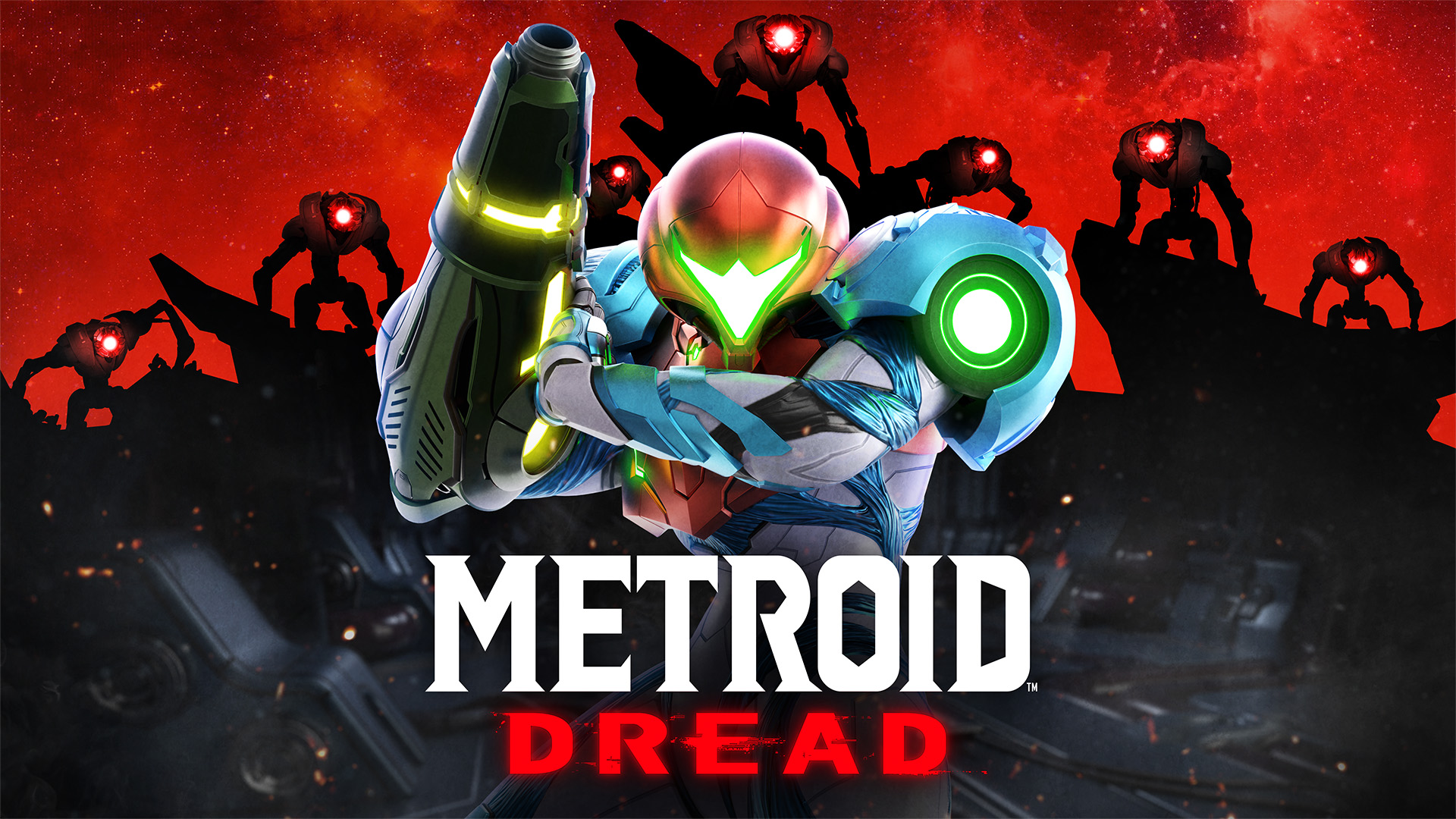
E3 is always a special time of year for the gaming community and Nintendo have become masters at putting out news at the event that gets their fans truly excited for what’s to come. With no news of Metroid Prime 4 since its delay was announced in January 2019, fans were hopeful (as they always are), that Nintendo might use the June event to finally release more Metroid news into the wild. And of course they did release more Metroid news – incredible news too – just not the news that people were expecting.
The fanbase was abuzz at the announcement that Metroid Dread was finally becoming a reality, having been canned as a DS idea back in the mid-2000s. A new 2D Metroid game… coming to Switch… in only 4 months time…! For fans of Samus Aran and her bounty-hunting adventures, news truly doesn’t get much better than that. As huge Metroid fans, the VGamingNews team were also stoked about the new release and leapt to secure their copies for release day and not a day later! So, with more of the team playing a game than normal, we’ve taken a slightly different approach to our review for Metroid Dread, which has a more collaborative approach than our usual write-ups – we hope you like the slightly different style. As always, we’ll leave out all the spoilers that we can but there’s going to be some that we can’t avoid in the process of discussing the game – you’ve been warned!
At A Glance
| Scores | |
| Visuals | 9/10 |
| Sound | 7/10 |
| Gameplay | 8/10 |
| Overall | 8 /10 |
| Positives | + Stunning visuals with gripping cut-scenes + Fast pace that makes exploration & combat fun + Epic boss fights (lots of them!) + Samus oozes personality throughout |
| Negatives | – Feels more linear than previous Metroid titles – Controls a little fiddly once all abilities unlocked – A solid plot lacks real depth due to limited characters |
| Price (When Reviewed) | £49.99 |
| Our Playtime | 17 hours 15 mins |
| Available On | Nintendo Switch |
[Drew Sherratt] Developed by MercurySteam, the team behind 2017’s 3DS remake of Metroid Samus Returns, Dread fires up exactly where Metroid Fusion leaves off, and players are offered a decent retrospective to catch them up if they haven’t played the previous games in the series before hopping into the newest installment. We rejoin Samus as she’s sent to the planet ZDR by the Galactic Federation, following their discovery of footage suggesting that an X parasite survives on the far flung world. The Federation had already dispatched seven EMMI (Extraplanetary Multiform Mobile Identifiers) robots to the world to deal with the threat but communications have been lost and Samus is deemed the best option to discover what’s wrong and neutralise the problem. Of course, upon her arrival Samus finds that plenty is wrong and has to deal with the Federation robots, who have seemingly gone rogue, as well as a mysterious Chozo warrior who leaves her within an inch of her life before showing her mercy.
[DS] It’s hard to start anywhere other than the visuals, which are jaw-droppingly beautiful; fans of other consoles firing out memes about the state of the graphics on the Switch will have to eat a sizable portion of humble pie here. Samus looks fantastic in her new white and red power suit, with the glowing visor adding a real sense of menace to our bounty hunter, especially as she stalks through the darkness in the cutscenes. The way that Nintendo seamlessly pulls players in and out of these cutscenes adds a real sense of drama too, as you’re often given back control of Samus just as a threat is about to pounce.
[Joe Whitfield] The cutscenes really packed a punch right out of the gate. When developers, MercurySteam, took Samus out of the 2D space every opportunity was taken to blend action movie cinematics with frenetic closeups, along with peppering in a few first person viewpoints too. Each cutscene was utilised in such a way that even though I wasn’t pressing buttons, I still felt engaged in the action. The zippy camera angles meant that not only the foreground had to be fully realised but also the backdrop of ZDR, this was particularly present in boss fights as the action would instantly break into a rollercoaster cutscene with Samus and the enemy entangled in a dual as the camera swirls around them.
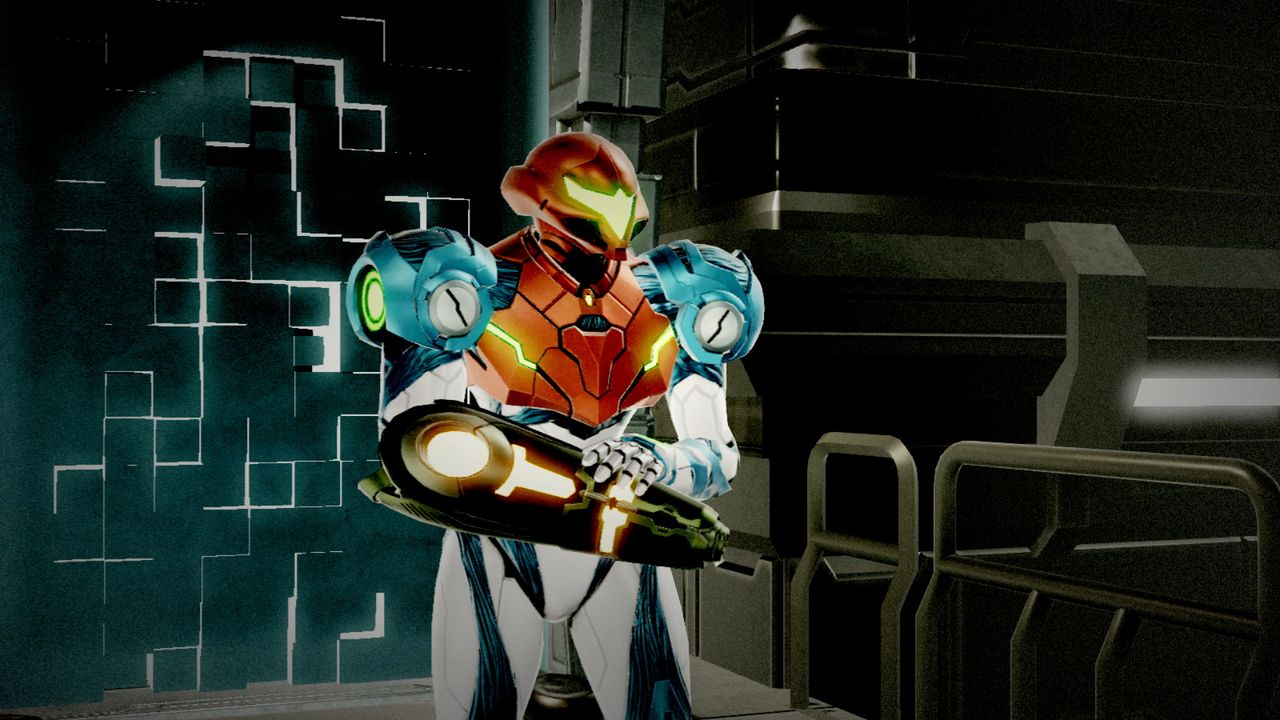
[DS] The ambient backgrounds are indeed wonderfully well crafted, with a level of detail that adds a huge amount of atmosphere to the world without any additional story telling. This is especially true of the more ‘living’ areas of ZDR, where the background flora and fauna breathe real life into the planet against the stark contrast of the bleak technological zones. The Chozo areas particularly caught my attention, and the visuals here, alongside the snippets of Chozo lore you’re offered had me champing at the bit for more. Perhaps the most impressive visual element are the in-game animations for Samus, which have a casual mastery about them. Whether it’s the way she idly leans on nearby platforms, or the fluid motions in her free aiming – her movements are dynamic in a way that truly stand out against any other game I’ve seen in the genre. One thing I’d have liked to have seen is a greater use of depth however, and I believe that Nintendo missed a chance to add Dread to the annals of 2.5D masterclasses like Donkey Kong Country Returns and Oddworld: Abe’s Oddysee. Were Samus able to navigate on platforms in the near-fore- and far-background areas shown in the game, there would have been a much greater sense of scale to the planet ZDR and lessen the feeling that you’re playing on a hand-crafted flat plane.
[JW] – While the environments feel like a conveyor of left to right, up and down, where Metroid Dread does excel is Samus Aran herself. The bounty hunter has never had so much personality oozing through her power suit. In previous games, she’s been the stoic, ‘get the job done’ type character, only relaxing once she had made it back to her ship. In Dread, a range of emotions are presented. Throughout my time I noticed the urgency and fear of being hunted by the EMMI, the grit of being the true underdog and, to much hilarity, the sassiest person on the planet. The charismatic nature of Samus is a breath of fresh air, and it doesn’t stop here, as her personality also spreads through to her movement.
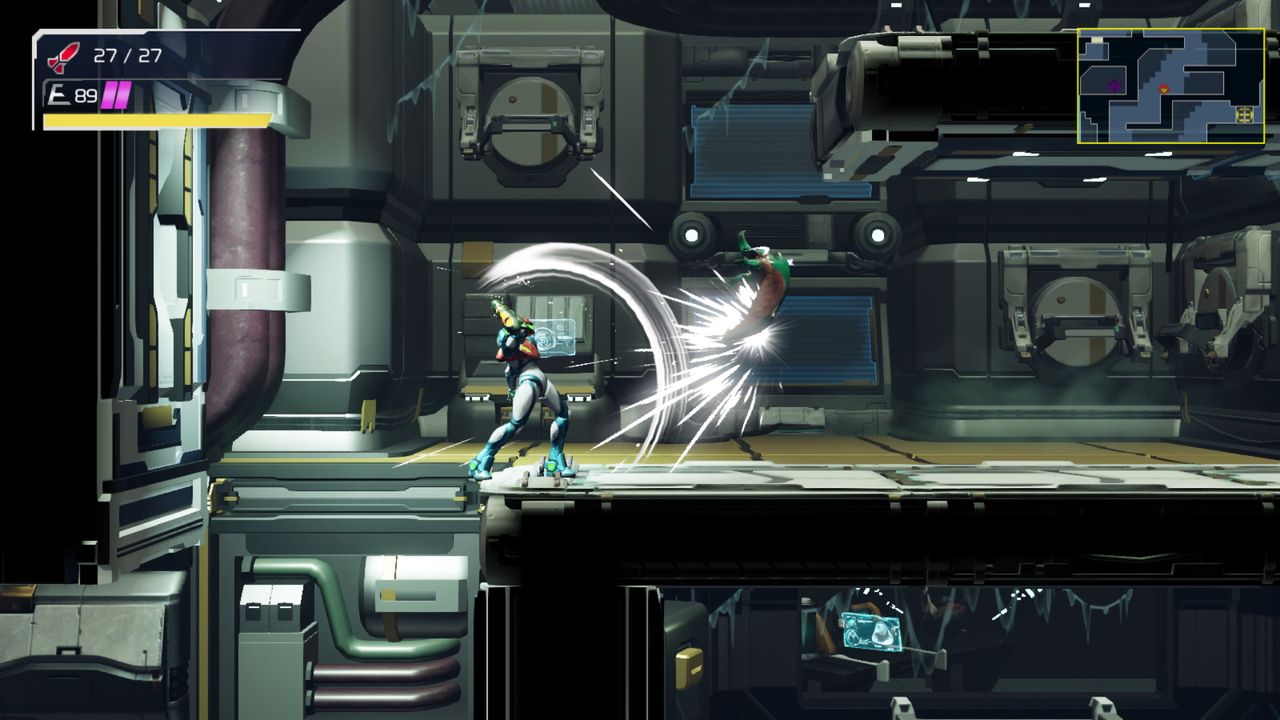
[DS] To that point, the gameplay in Dread has a very dynamic feel and has a much more rapid pace than any preceding Metroid title. Samus feels incredibly fleet-of-foot and nimble, and there’s an ease of movement that makes navigating the sprawling areas of ZDR much more enjoyable than in any installment that came before. You are (of course) hampered in getting around by missing many key abilities early on, but I was pleasantly surprised by how much MercurySteam deviated from the usual upgrade timeline, especially towards the start of the game. By quite simply shuffling the deck and having you collect some new upgrades first, it feels like you’re breaking new ground from the get-go instead of retreading the same old ‘Morph Ball first’ progression from previous games.
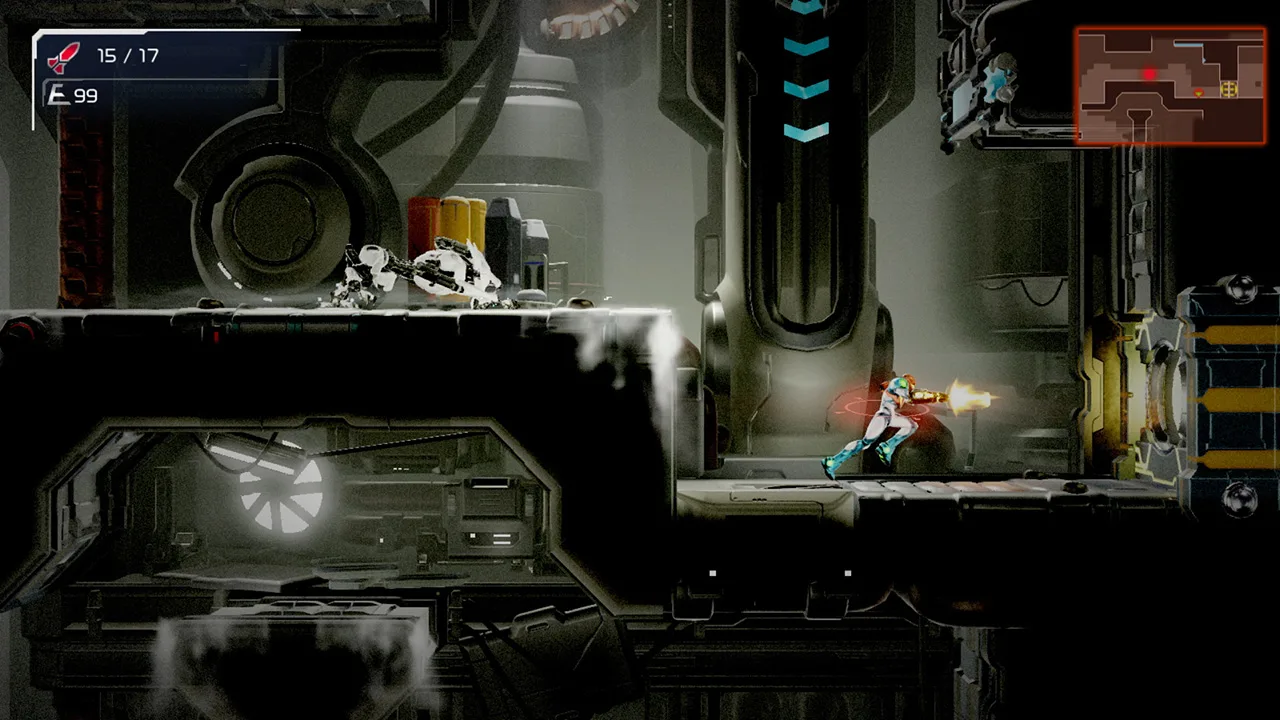
[DS] The Phantom Cloak and Storm Missiles are wonderful new additions to Samus’ arsenal and each stands out for very different reasons. The Phantom Cloak allows Samus to turn invisible for a time and is a necessity for survival as you try to creep past the stalking EMMI. Samus’ health will begin to drain if you stay cloaked for too long though and this adds a real sense of tension trying to weigh up what poses the bigger threat to your life – an onrushing death machine, or the slow degradation of your own health in trying to stay hidden. The Storm Missiles come much later and are more in keeping with the badass sense of Samus that we know and love. By holding the missile button you are able to lock on to multiple enemies and rain a shower of anime-inspired firepower down on them to devastating effect. Being able to lock onto the same enemy multiple times is a nice touch too, meaning that you can pelt stronger foes waves of missiles which keeps some of the nastier bosses from overstaying their welcome.
[DS] Speaking of nasty enemies, the EMMI top that list; or at least they do in the early portion of the game. Running into the EMMI while you have minimal upgrades or means of escape is truly unsettling, with the change of lighting and music really emphasising the sense of danger when the robots give chase. I found myself waiting at the entrance to the designated EMMI areas and taking a deep breath before stepping inside, in order to prepare myself for the stress of what was coming! I’m a huge fan of these enemies being unkillable until the right time, and even more so of them being able to take you down in one hit – it ramps up the stakes and gives Samus a sense of fragility that underlines their threat. These encounters do become less enjoyable as the game goes on though, with a sense of normalcy setting in and things becoming a little stale without ever falling into the realms of repetitive. Some of the later robots do feel overpowered and rather unfair though, and entering into an EMMI zone near the end of the game becomes a frustrating chore as opposed to an enjoyable challenge.
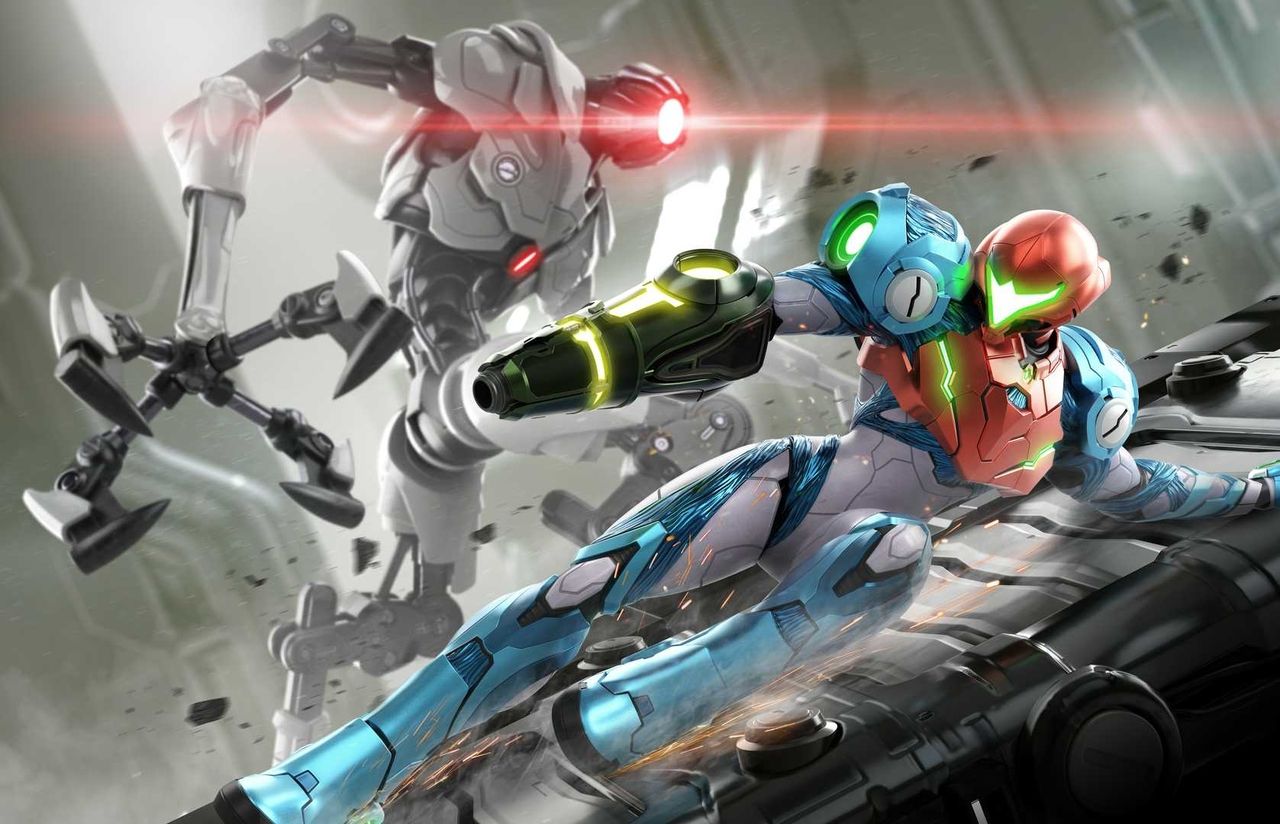
[JW] I agree that the ‘dread’ elements did get a little old by the conclusion of the game, and perhaps instead of having certain zones where the EMMI operated, it could have had a persistent threat throughout the level that would have ratcheted up the tension throughout the playthrough. Things are further dampened with an abundance of save points. Along with your typical save rooms, all navigation and computer access points allow the game’s progress to be backed up. Even if I chose to forgo a save and was caught by an EMMI, the game would reload to the entrance for another attempt. Admittedly, seeing the zones in the middle of the level map did cause sweaty palms before entering them, and the various clicks and chirps that came from each EMMI still managed to send a shiver down my spine each time they were closing in but I felt that if Metroid Dread allowed Samus to be hunted, a la Resident Evil 2, with it’s meanincing boss and lack of resources, it could have made for a consistent state of uneasiness throughout, rather than some sections of a level.
[DS] Without wanting to be unfair from only a single playthrough, I found the sound in Metroid Dread to be almost entirely forgettable, which is a huge downgrade from the rest of the series that is littered with memorable music. Now, to be clear, what you’re offered in the music department is certainly well crafted, but I couldn’t necessarily hear a track from the game and relate it to a particular moment or area of the planet, and nothing really jumped out as being especially ear-catching (is that even a thing?). There’s a snippet of sound later in the game that made me gleefully happy but as I’d hate to spoil the moment for anyone yet to play the game (especially long-standing Metroid fans), I’ll leave people to figure out exactly what I’m talking about.
[DS] In a landscape filled with sprawling maps, endless side-quests, and branching story options, Metroid Dread may look to some to be the tiniest of experiences, but I’d argue that the length is absolutely perfect. The story comes to a crescendo just as I felt I’d experienced all that the gameplay could offer, and things are tied up with a nice bow before the plot begins to drag or levels feel like they’re simply padding out playtime. You’ll unlock a Hard Mode upon your first completion and there’s also a thriving speedrunning scene around the game for players who want to extend their experience, but there’s plenty of replayability just as it is. Immediately upon switching off the game I felt the sense that Dread would be a game I’ll replay many times over in the years to come. There will, of course, be players who would begrudge paying a AAA price tag for a game that only takes 8-12 hours of to complete (and I wouldn’t look to argue with them on how to spend their money), but for me, the experience presented by Metroid Dread fully justifies the price of admission.
[JW] The length of the game was spot on. Dread didn’t overstay its welcome and didn’t feel too short either. I would say the load times between levels felt excessively long. Perhaps that’s to do with the Switch loading each level in full, rather than splitting them into chunks as seen in previous games, but when I was trying to mop up the last few upgrades and zip between each level, the loading screens seemed to last an age. It was counterintuitive to how Samus controlled – she was quick, nimble and simply worked. The free aim on the left stick was well overdue although it was a little too sensitive, as on occasion I found myself aiming into the floor rather than the creepy crawly in front of me. My biggest issue came with loading all of the weapons separately onto each of the buttons, with three out of four shoulder buttons reserved for some form of aiming which did get confusing, especially under pressure. This gripe aside, the shake up of the item locations kept things fresh enough and kept me on my toes throughout, and even though there were times I found myself lost in the labyrinth, I still managed to find a way through just by rechecking each area. If I was to compare it to a fairytale, Metroid Dread would certainly be the porridge that was just right.
Metroid Dread is a wonderful addition to a storied but long-dormant franchise, and offers some modern shine on a traditional experience. The stunning visuals and some simple but fun new mechanics make it a joy to play, even through the sometimes punishing difficulty level. The busy controls might bamboozle some players in heated moments and others will argue that it’s too short to justify the price tag, but there can be no mistaking the overall quality of the title. Metroid Dread is a fantastic game and fans of the series can take heart that there’s certainly much more to come for Samus Aran in the future. Hopefully there won’t be such a wait next time!
